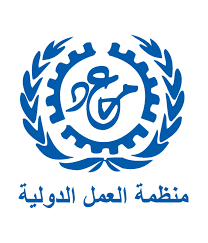وظائف شاغرة لدى منظمة العمل الدولية في الاردن
1. Labour Inspection Action Management Systems (LIActionS) Well conceptualized, designed, developed, implemented, and maintained electronic Labour Inspection Action Management Systems (LIActionS), provide unparalleled opportunities to make labour inspectorates more strategic, effective and efficient. Efficacious LIActionS typically utilize Business Process Management System (BPMS) applications. BPMS are based on a process workflow or a set of workflows and consequently enhance the protection of due process through the standardization of enforcement and transactional processes and procedures, enable traceability and oversight to ease supervision and performance management, and improve transparency and greater exchange of information interagency and with workers, employers, and the general public through automated reporting and communication mechanisms. BPMS also ease internal and external reporting, standardize the collection and analysis of statistics, and facilitate evidence-based planning. In the inception phase of the development of LIActionS, labour inspection action(s) workflow(s) of enforcement and transactional processes and procedures must be identified, documented, visually mapped, and validated. Workflows typically include all steps in the action, from initiation to conclusion, required timeframes for each step, required forms for each step, roles of the personnel that touch each step and for what purpose, decision points that may create deviations or sub-actions, and links to relevant actions of other authorities such as courts, employment injury insurance claims, and dispute settlement mechanisms. 2. Objective and scope The objective of the external collaboration contract is to accurately and comprehensively identify, document, visually map, and validate the following labour inspection actions: Enforcement of national labour law in relation to working conditions; Enforcement of national labour law in relation to occupational safety and health hazards; Worksite accident investigations; Work stoppage and/or partial/complete worksite closures. The effort may result in more than one workflow or various deviations from a single workflow. At a minimum, the workflow(s) must capture the following information: 1. Start: Date on which an action is initiated. 2. End: Date on which an action is concluded. 3. Trigger: Factors that individually or collectively result in the initiation of an action. 4. Step: Specific activities necessary to conduct and complete the action, which includes legally required activities as well as activities required or recommended by existing policy or practice. Must differentiate what is required by law and immutable, and what is done is practice and may be legacy/bespoke and modifiable. 5. Decision Point: Moment at which a predetermined course of action (series of steps) is (or must be) initiated. 6. Timeframe: Specific period by which a step must occur by law, policy, or practice. 7. Role: Personnel designated to assume the function related to the step, which may include administrative personnel, front-line inspectors/investigators, supervisory inspectors/investigators, higher level labour inspectorate decision-makers, and others. 8. Obstacle: Impediments to the efficient and effective conduct and conclusion of a step (e.g., unnecessary or redundant approval processes, excessive documentation requirements, delays due to bottlenecks, lack of process clarity). 9. Document: Necessary letters, forms, checklists, decision-making guidance, templates, and/or reports required to be completed for a particular step. 10. Interconnectivity: Required and desired links to relevant actions of other authorities such as courts, employment injury insurance claims, and dispute settlement mechanisms. Different workflow(s) may be required to document the different processes in different regional offices and/or between the central authority and regional authorities. The resulting workflow(s) must meet Business Process Management System (BPMS) specifications to be used by developers for process automation in the future LIActionS 3. Background and experience As the mapping of the procedural workflow of the labour inspectorate is the backbone of the BPMS based LIActionS a highly qualified external collaborator with both legal and business analysis background is required to fully capture the legal requirements in connection to the procedural workflow of the labour inspectorate. The external collaborator should poses the following education and experience: 1. Bachelor’s degree in business, economics, law, or computer science from a recognized university; 2. Five years or more experience as a business analysis on large and complex projects. Practical experience working with a public enforcement agency in reviewing or mapping of business process would be an added asset; 3. Strong analytical skills with a demonstrated ability to extensively analyse business processes and workflows; 4. Demonstrated experience with visually mapping processed; 5. Demonstrated experience facilitating workshops and focus groups; 6. Experience with MS Visio, Bizagi, or other commonly deployed workflow modeling application; 7. Understanding of government structure and inter- government relations; 8. Extremely detail oriented; 9. Excellent communication and facilitation skills, including in multi-cultural settings; 10. Highly motivated and committed to the values of transparency, integrity, and compliance with the law; 11. Fluency in English and Arabic written and spoken. Shortlisted candidates will be required to take a written test to demonstrate their ability to visually map a process based on a case study. 4. Selection Interested applicants should send their CVs, cover letters, daily rate to amm_syrian_crises@ilo.org by July 31th, 2019 with “LIActionS” in the subject line. Short listed candidates will be notified by the ILO and invited for an interview. The various proposals will be assessed on their merit and relevance to the proposed scope of the assessment and the experience of the consultants, and their price.
